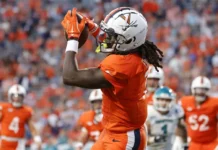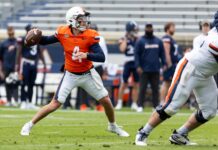Hinkie’s departure is a notch in the belt for the anti-analytics crowd. With Hinkie’s reign came a team-building style predicated on investment in the future over the present. Hinkie highly valued draft choices and cap space as chances to acquire stars. If those stars were not to the level of franchise foundational pieces, then Hinkie had no problem dealing them for more chances. This philosophy is evident through his roster maneuvering.
Gone from a team that went 34-48, narrowly missing the playoffs in the 2012-2013 season, were Jrue Holiday (dealt to the Pelicans for a first round pick draft and Nerlens Noel), Spencer Hawes (dealt to the Cavaliers for two second round picks) and former second-overall pick Evan Turner (traded to Indiana for Danny Granger’s expiring contract, Lavoy Allen and a second round draft pick).
They drafted Michael Carter-Williams in 2013 only to trade him two years later for a protected first round pick from the Lakers. This past summer, the Sixers drafted Jahlil Okafor with the third overall pick, and there have already been rumblings that they are looking to trade the former Duke product. In 2014, they drafted Joel Embiid and Dario Saric (after initially drafting Elfrid Payton and dealing him for Saric’s rights and a 2017 first round pick), two players who have yet to suit up for the club, with two top 12 draft picks.
This was almost definitely Hinkie’s undoing. Rolling each year’s ballclub back, paying at the salary floor and being purposefully bad for the sake of increasing your chances at the number one pick in the draft is fine if there is incremental improvement to show for it. The fact of the matter is that there was very little of that during Hinkie’s time. While there are few general managers who would only require three years to implement their plans, it is not surprising that Philadelphia’s brain trust grew tired of being the laughingstock of the league.
Where does that leave Philadelphia now? They just hired Bryan Colangelo, Jerry Colangelo’s son, as Hinkie’s replacement, a move that was almost surely already in the works before Hinkie decided to step down. Colangelo received praise early in his career for being the architect of the Nash-era Suns until 2006, when he accepted a position as president and general manager of the Toronto Raptors. Despite winning the 2007 Executive of the Year Award, there is seldom praise to go around for Colangelo’s tenure in Toronto. He is most known for feeling the pressure to win now and making ill-timed trades for the likes of Jermaine O’Neal and Rudy Gay.
As this relates to the Sixers, they almost definitely have a mandate from ownership to win now, or at least to drastically improve. They will have the second most space below the league’s salary cap this summer, and they will have boatloads of first round picks with which to orchestrate trades. By running Sam Hinkie out of town, the 76ers chose a divergent path from following the process. However, with Bryan Colangelo spearheading the operation, one must wonder which path is more volatile.
















